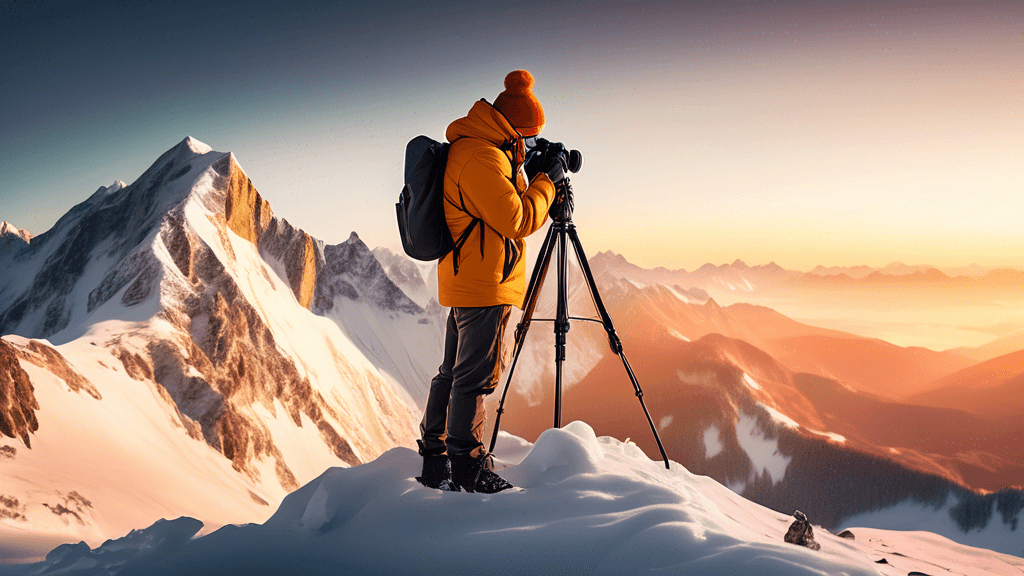
Capturing the Summit: Tips for Alpine Photography and Mountain Vistas
Share
Capturing the Summit: Tips for Alpine Photography and Mountain Vistas
Alpine photography offers unique challenges and awe-inspiring rewards, making it a sought-after discipline among photographers who are eager to capture the raw beauty of nature from peaks and summits. This specialized form of photography not only tests your skills behind the lens but also your endurance and preparedness in rugged, high-altitude environments. Whether you are a seasoned mountain trekker or a beginner aiming to elevate your photography skills, understanding the nuances of Alpine photography is key to capturing breathtaking mountain vistas.
Understanding the Challenges of High-Altitude Photography
Before diving into the sea of technical camera settings and creative composition ideas, it's crucial to discuss the physical and environmental challenges posed by mountain landscapes. Altitude can affect both the photographer and the equipment. Consider these factors:
- Thin Air: High altitudes mean less oxygen. Breathing becomes harder not just for you but also can affect the performance of your camera battery, causing it to drain faster.
- Changing Weather Conditions: Weather in high-altitude areas can be unpredictable. Sudden rain, snow, or a drop in temperature can occur, impacting your shooting session and safety.
- Rugged Terrain: Navigating through rocky or icy paths requires solid footing and careful timing, essential for securing the perfect shot without compromising safety.
Essential Gear for Mountain Photography
Packing the right equipment is half the battle when planning for Alpine photography. Your gear list should include:
- A Reliable Camera: A sturdy DSLR or a mirrorless camera known for good performance in various weather conditions is ideal.
- Versatile Lens Choices: A mix of lenses, such as a wide-angle lens for expansive landscapes and a telephoto lens for capturing distant peaks, will provide flexibility.
- Sturdy Tripod: Wind and uneven surfaces make a strong, stable tripod indispensable for sharp, clear images.
- Extra Batteries: Given the quick battery drainage in cold conditions, extra batteries are a must.
- Weather-Resistant Bag: Protecting your gear from sudden weather changes is crucial, hence a good-quality camera bag designed for rugged environments is recommended.
Best Practices in Alpine Photography
With your gear ready, let's delve into the techniques and strategies for capturing the most stunning alpine photographs.
- Golden Hour Brilliance: The time during sunrise and sunset, known as the golden hour, offers magical lighting conditions which are perfect for capturing vibrant landscapes.
- Utilizing the Blue Hour: The period just before sunrise and just after sunset, known as the blue hour, gives a cool tone to the scenery and helps captivate the mystique of the mountains.
- Composition Techniques: Employ the rule of thirds, leading lines or framing to guide the viewer's eye through the image and enhance the photograph’s visual impact.
Capturing the Raw Emotion of Nature
In the words of renowned landscape photographer Ansel Adams, You don’t take a photograph, you make it. This is particularly true in alpine photography where the unpredictable nature and the majestic sights demand more than just clicking the shutter. Here, you narrate the profound story of nature. Whether showcasing the ruggedness of the terrain or the ephemeral beauty of light playing across the peaks, each image you capture should be a testament to the spirit of the mountains.
Safety Tips for Alpine Shoots
Safety should never be compromised for the sake of photography. Here are some essential tips to keep in mind:
- Weather Awareness: Always check the weather forecast before heading out. Be prepared to turn back if conditions worsen.
- Physical Preparation: Adequate physical training and acclimatization are necessary to perform well and stay safe at high altitudes.
- Emergency Kit: Always carry a basic first-aid kit, navigation tools, and a communication device.
Conclusion: The Art of Mountain Vistas
Alpine photography is as much about the journey as it is about the outcome. It connects you deeply with nature, demanding resilience, respect, and a keen eye for the fleeting moments of beauty that mountains generously offer. As you climb higher and push your limits, remember to pause and breathe in not just the crisp mountain air but the majestic views, capturing them through your lens to share with the world.
Ready to embark on your next high-altitude photography adventure? Remember, the mountains are calling, and it's your turn to capture their everlasting glory.





